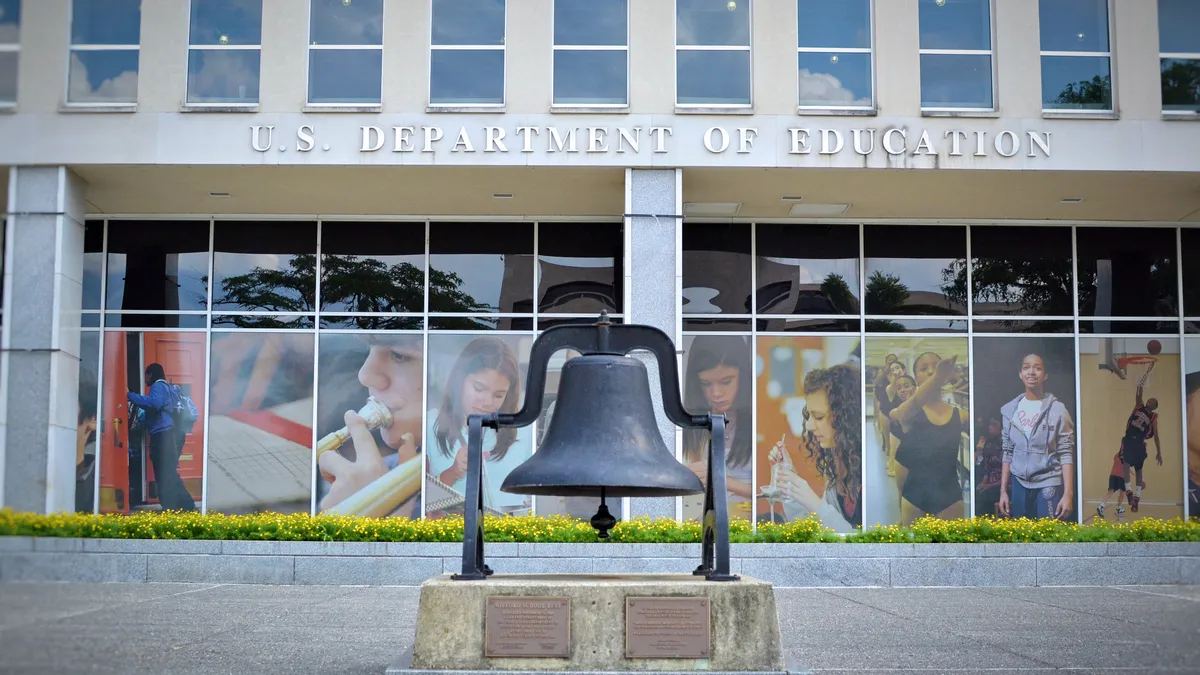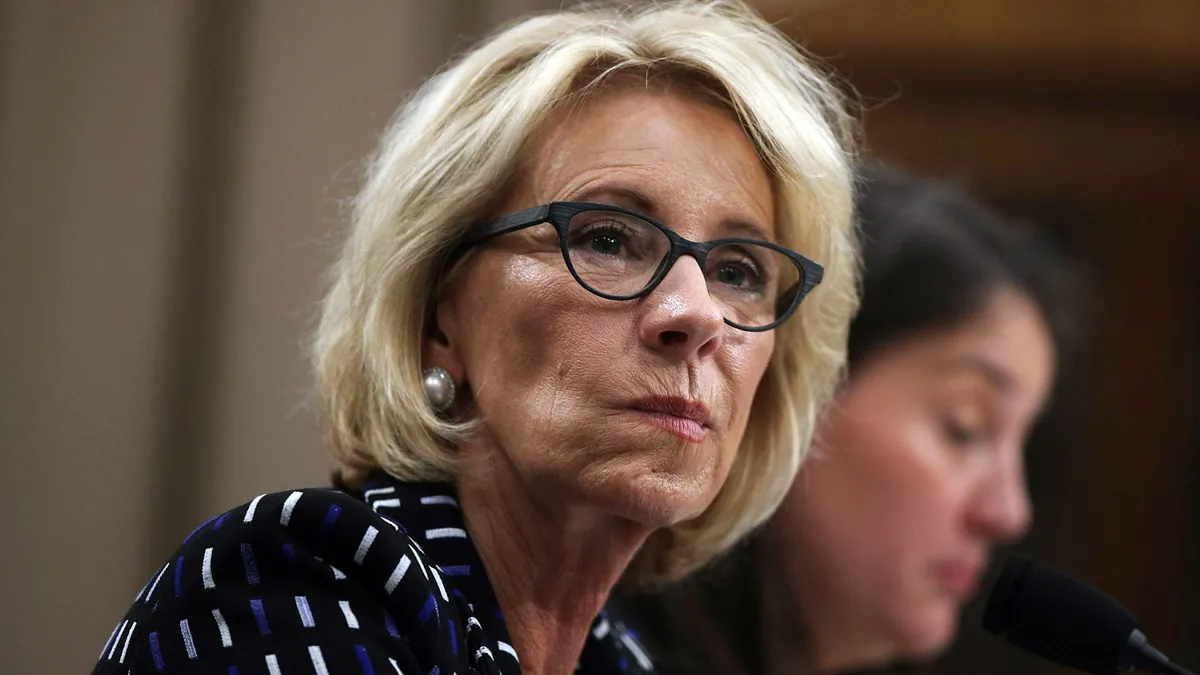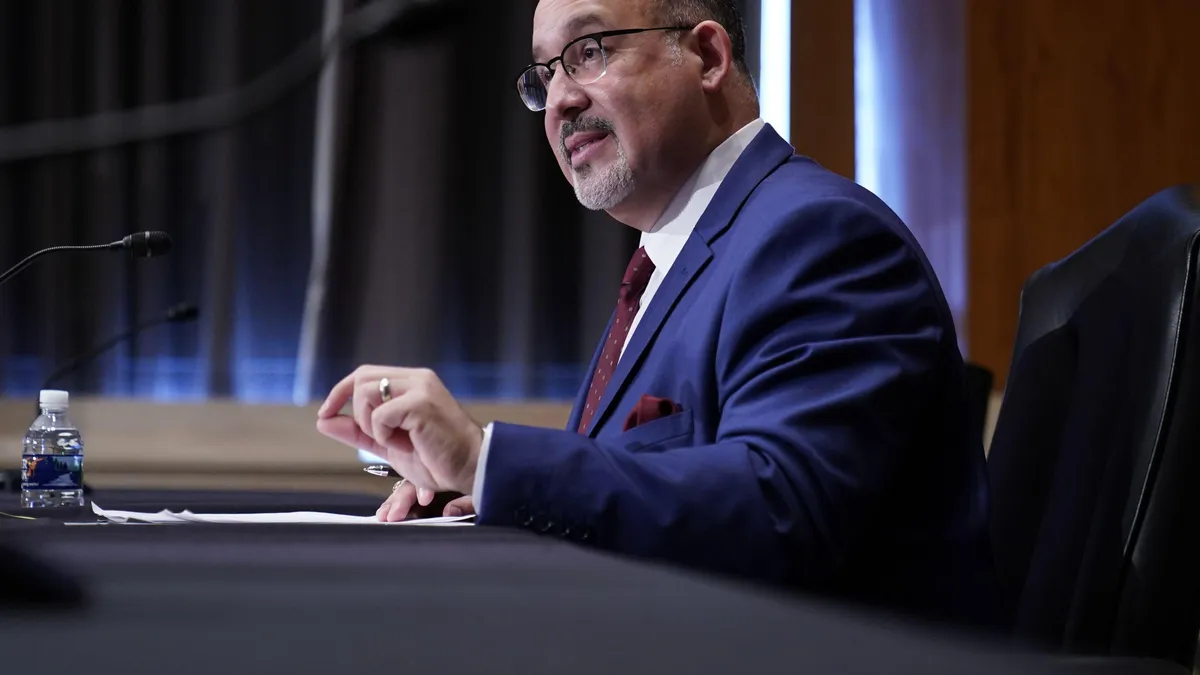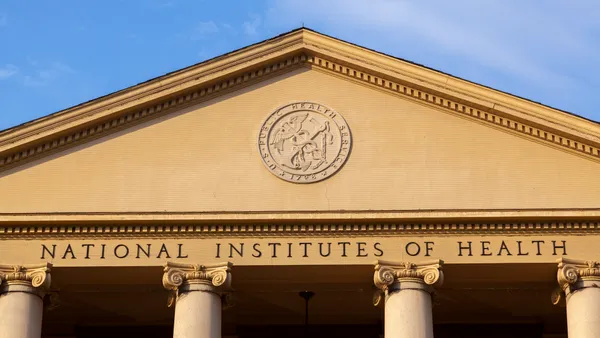Dive Brief:
-
The U.S. Department of Education is giving colleges more flexibility to use federal relief money provided under the second major coronavirus rescue package, which Congress passed in December.
-
The Trump administration dictated that institutions could only use their portion of that funding on expenses incurred on or after Dec. 27, the date the legislation was signed. New agency guidance removes that restriction.
-
Institutions are waiting for the Ed Department to release the third wave of direct aid from the latest coronavirus spending bill, which amounts to about $40 billion.
Dive Insight:
Former President Donald Trump signed the Coronavirus Response and Relief Supplemental Appropriations Act in late December, making available roughly $23 billion in postsecondary education aid.
This followed $14 billion in the first round of higher education relief. Higher ed groups have said at least $120 billion is necessary to help the sector address the pandemic's financial impact.
The Trump administration limited the second funding wave to costs incurred beginning in late December. But the guidance from the Education Department, released Friday, states institutions can use the money for lost revenue or expenses that date far back as March 13, 2020, when Trump declared a national emergency over the spreading coronavirus.
The agency also released an FAQ Friday describing what constitutes "lost revenue" and how colleges can calculate that amount. In that document, the department "strongly" recommended colleges devote the maximum amount of aid possible to emergency grants for students who have been disadvantaged by the pandemic. The department's directive makes clear colleges can use the funds to eliminate students' debt to institutions.
Colleges must use some of their aid from the three bills on student grants. At least half of the funds in the first and third bills need to be passed on to students.
The FAQ notes colleges have flexibility in how they calculate lost revenue. They could use a year-over-year comparison, or a semester-over-semester comparison using the same semester in the prior year, for example.
The department also said Friday that colleges can directly reach out to students who may qualify for the Supplemental Nutrition Assistance Program under newly expanded, but temporary, criteria. SNAP eligibility now includes students who are allowed to participate in state or federally financed work study during a normal academic year, as well as those who have an expected family contribution of zero this year. EFC is the former index used to calculate students' federal financial aid awards.























